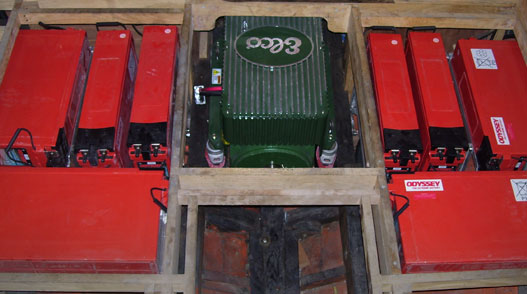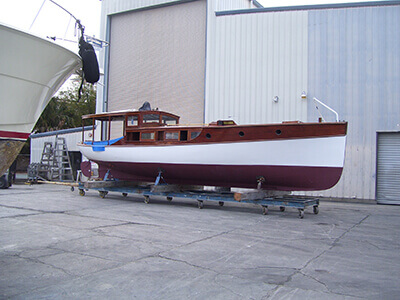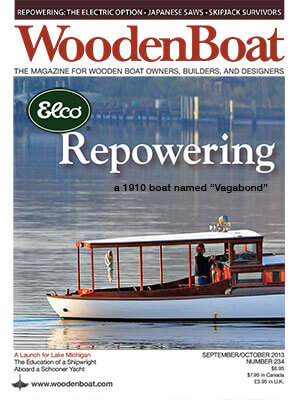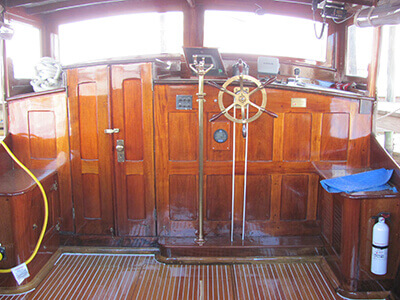

SIZING UP THE PROJECT
“At 400 RPM she ran about 2.5 knots. At 600 RPM we moved along a little over 4. At 1000 RPM it was a hair blowing 6.5 knots!“
Late in 2010 David Gillespie approached Huckins Yacht Corporation, an authorized Elco Dealer from Jacksonville Florida for assistance with re-powering his treasured restoration project “Vagabond”, a 1910 Yacht built by Consolidated Shipbuilding. The restoration project including repowering to electric. Their requirements were quite simple: a reliable and user-friendly system. They chose an Elco Motor because: First, the Elco Motor is made in the U.S.A. Second, they have a range of power units. We chose the EP-7000 rated at 35 H.P. DC. Third, they have a good track record, excellent communication skills and support.
As Vagabond was slowly lowered into the slip below the travelift for her maiden voyage, we all watched with wonder as she sank lower and lower into the nest of water. It doesn’t take but a light shove to send her off. We tied her to a dock and tested the genset part of the mix. Then we simply let the motor run in place to create energy use data.
We chose a pleasant afternoon without too much breeze or current for the grand test. The results were exciting. The 18 X 10 wheel pushed Vagabond effortlessly and . . . with a lurch if you weren’t light fingered with the throttle. An electric motor is far different. First, the 35 H.P. rating is equal to a 70 H.P. diesel. Second, it has maximum torque at 1 RPM. Since there is no gear box, only changing direction of the motor rotation from clockwise to counterclockwise when docking is needed. It can be tricky at first because the only slow gentle maneuvers are directly related to your very light touch of the joystick.
The motor’s top RPM is 2000. However, you can short boost it to 2500 in emergency. On a boat of this size and hull shape the 35 H.P. unit is more than David will ever use. The river cruise results we discovered were the following: We were going against an outgoing current, so we did runs in each direction for an average.
At 400 RPM she ran about 2.5 knots. At 600 RPM we moved along a little over 4. At 1000 RPM it was a hair blowing 6.5 knots! At 1500 RPM we reached hull speed at 7.5 knots. Any faster and the bow tries to rise up while the stern settles concernedly.
In conclusion at 4.5 knots David can expect about a 6-hour cruise adding to that time if he throttles back or cranks up the gen set.




